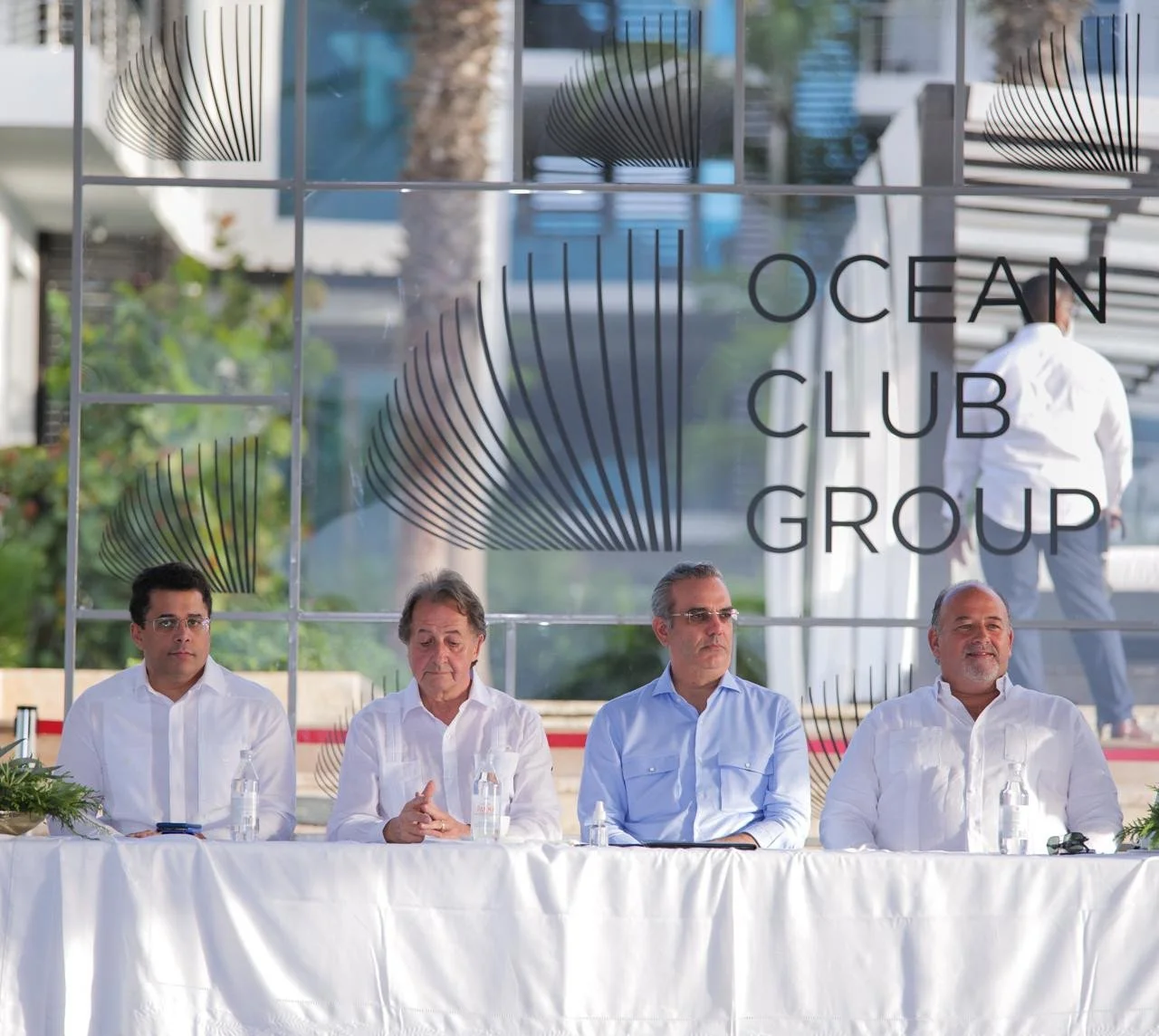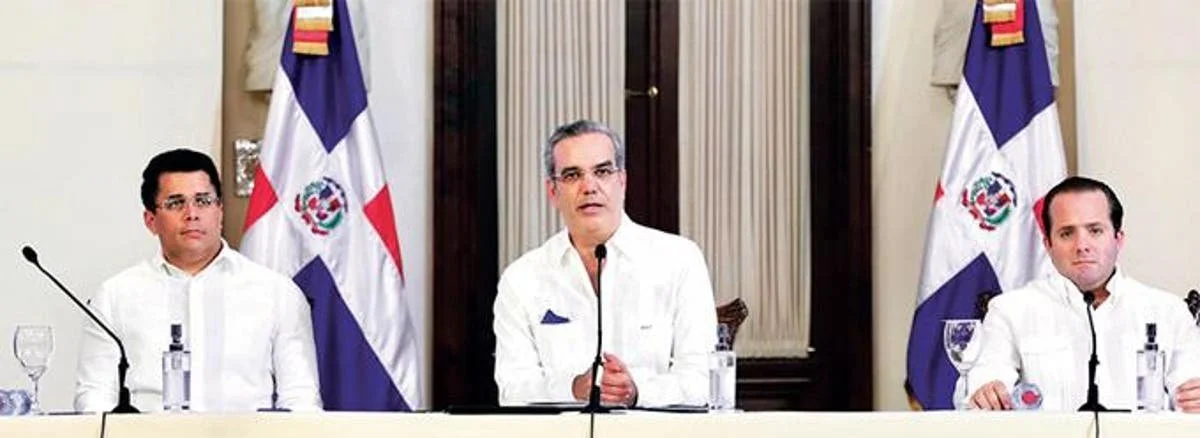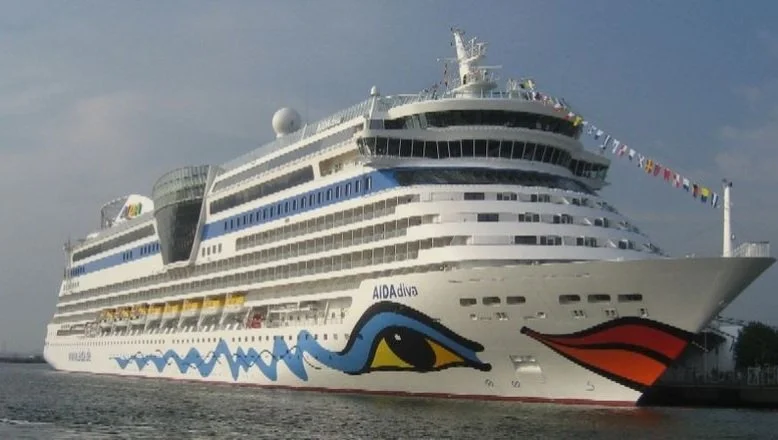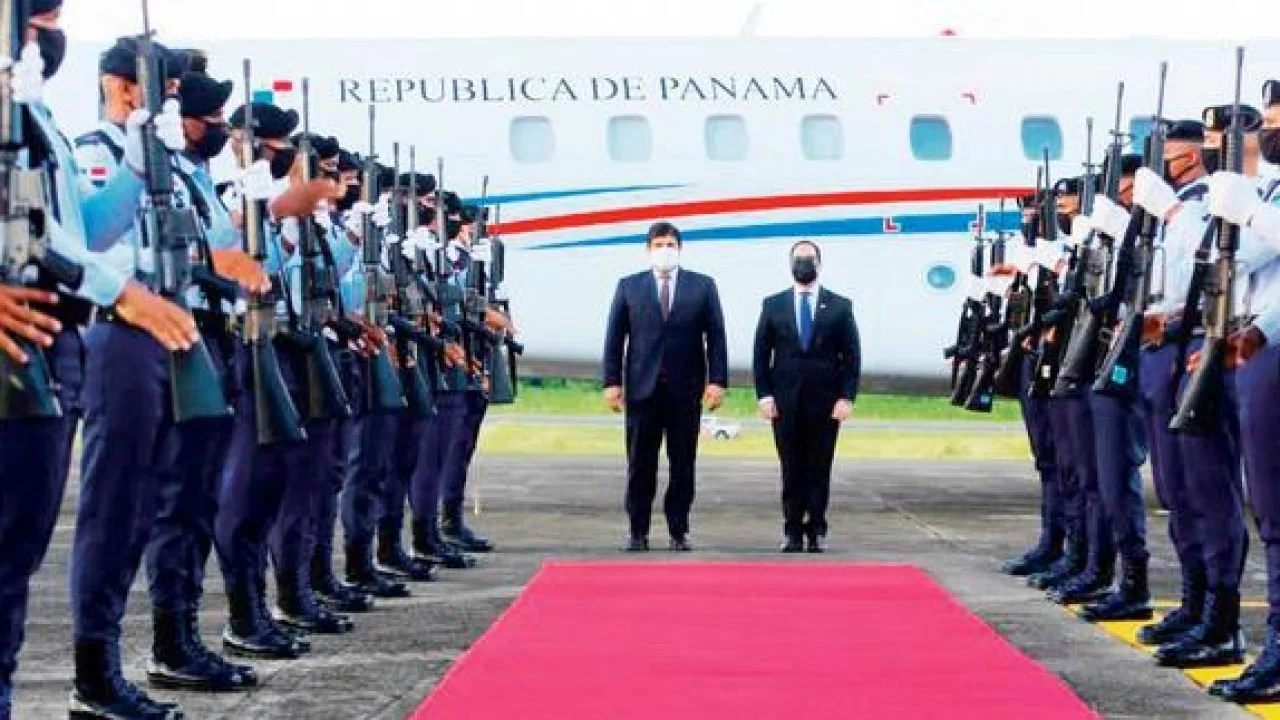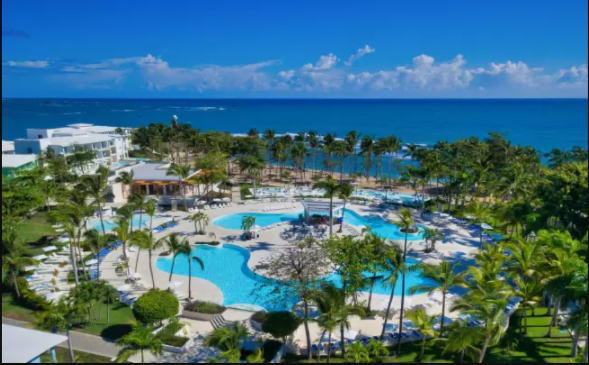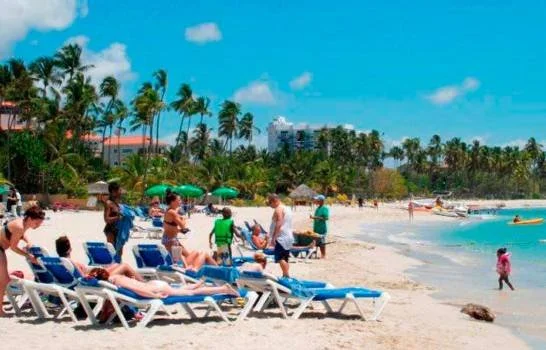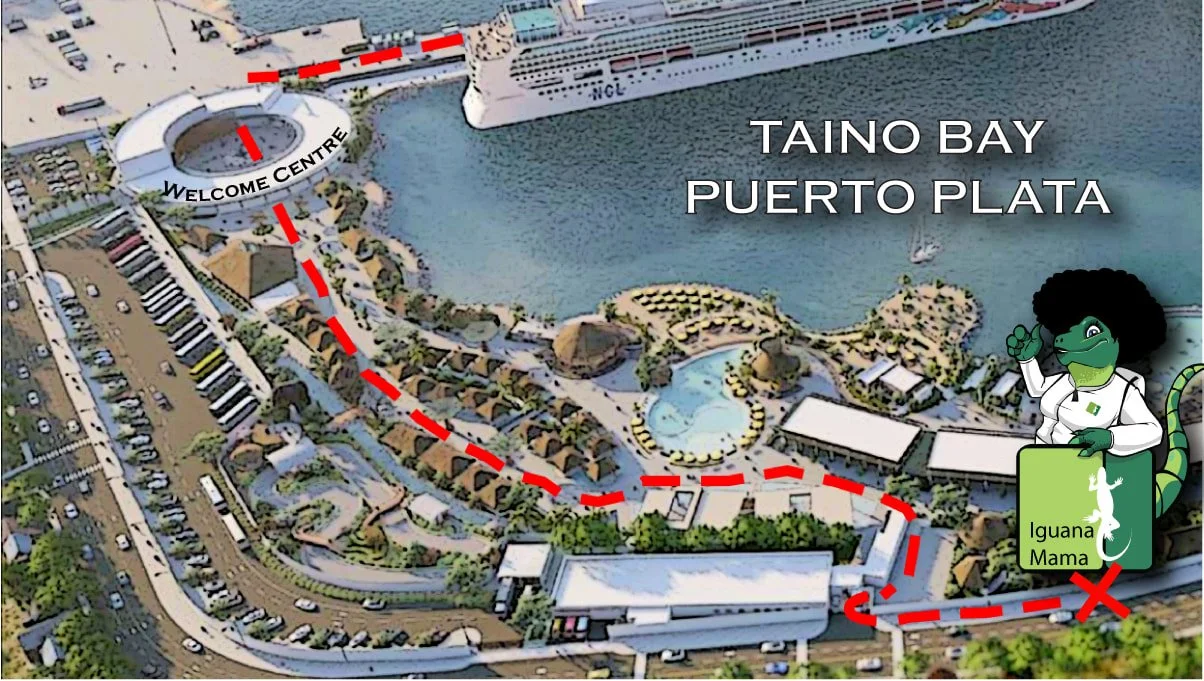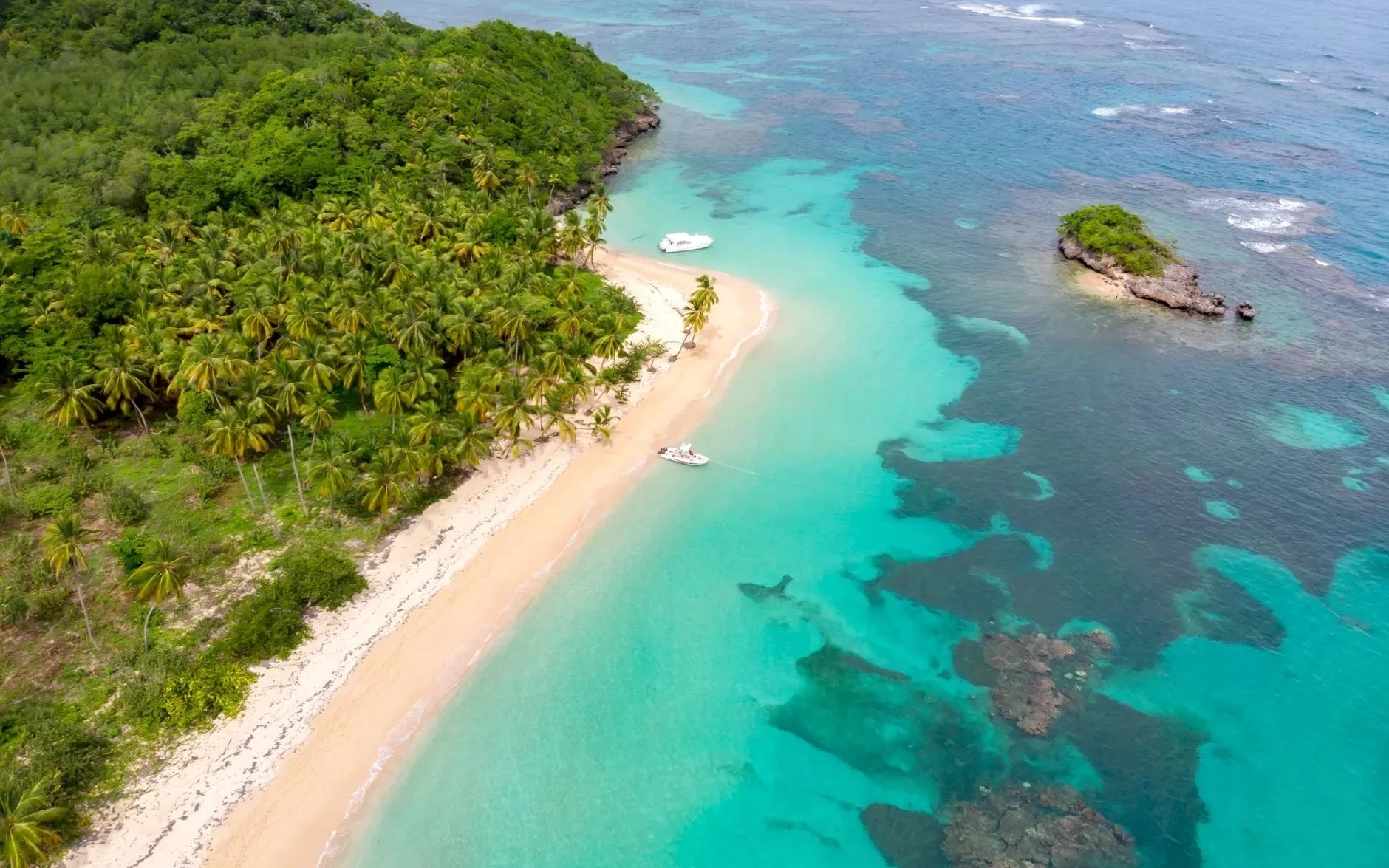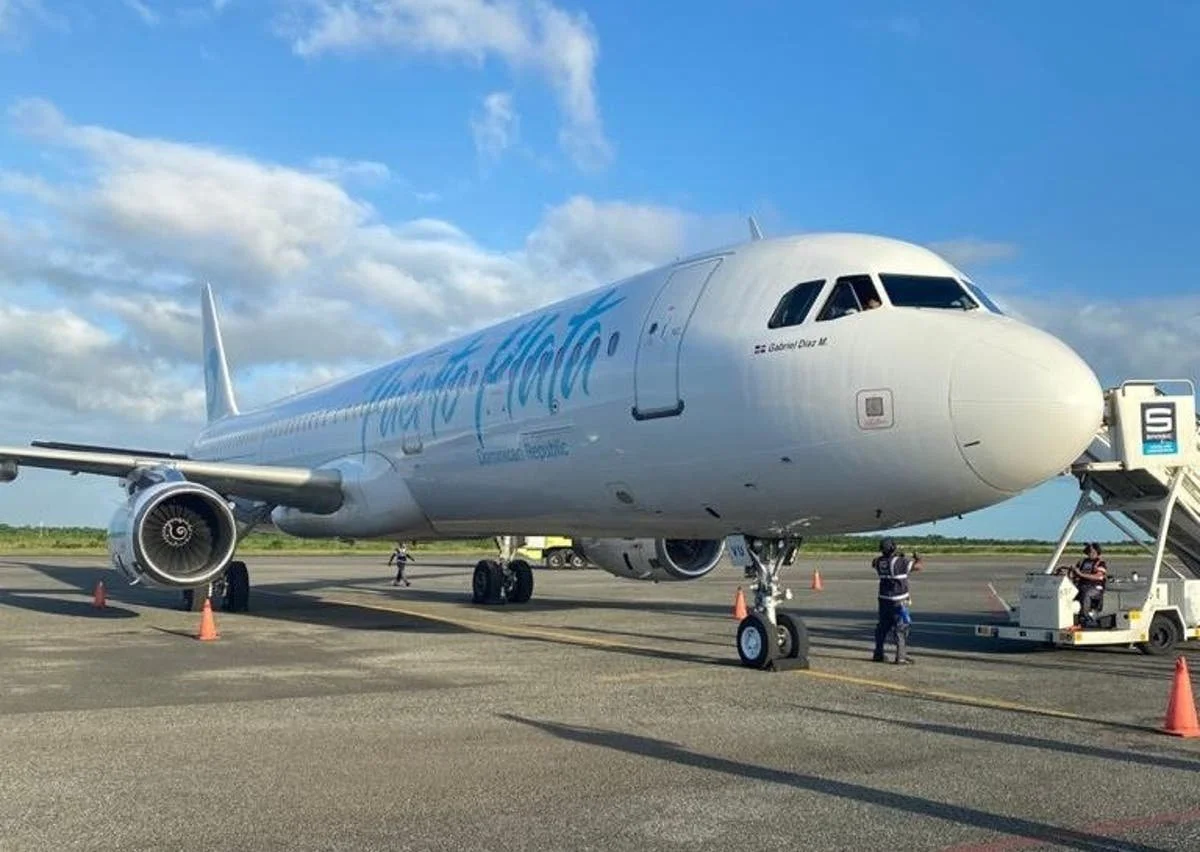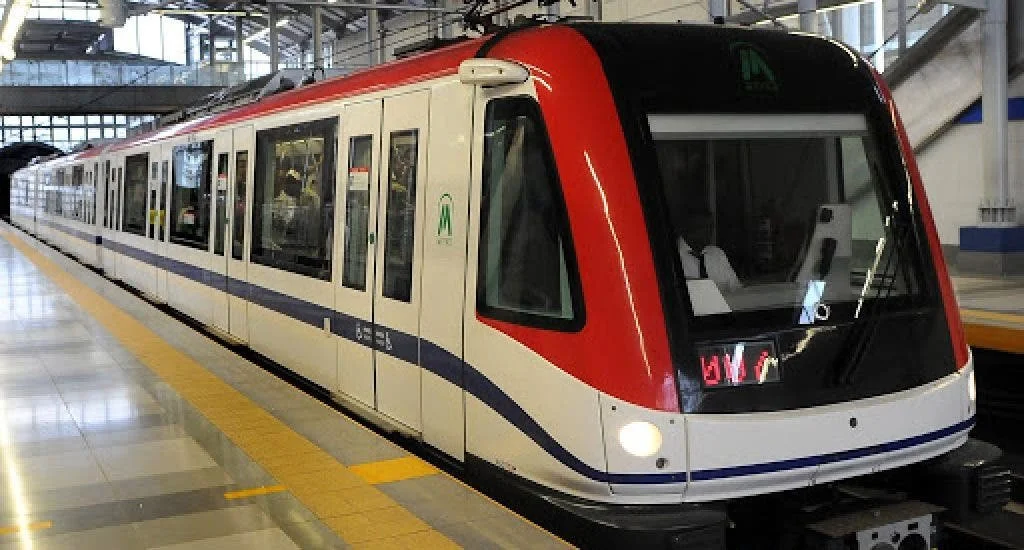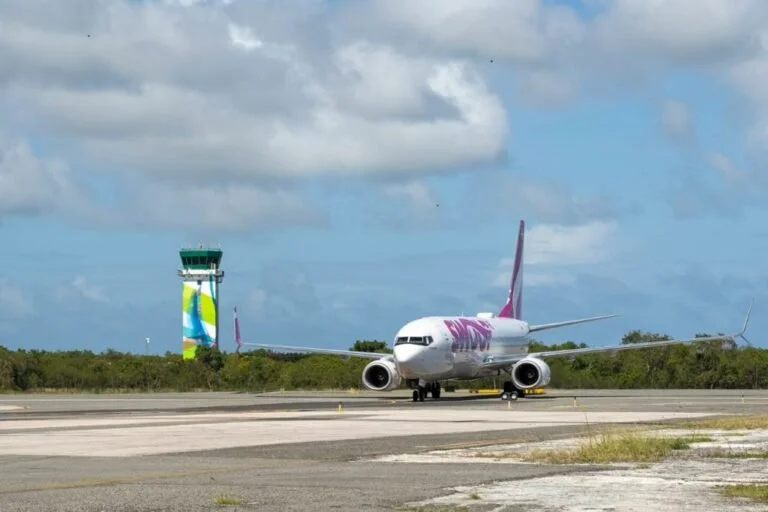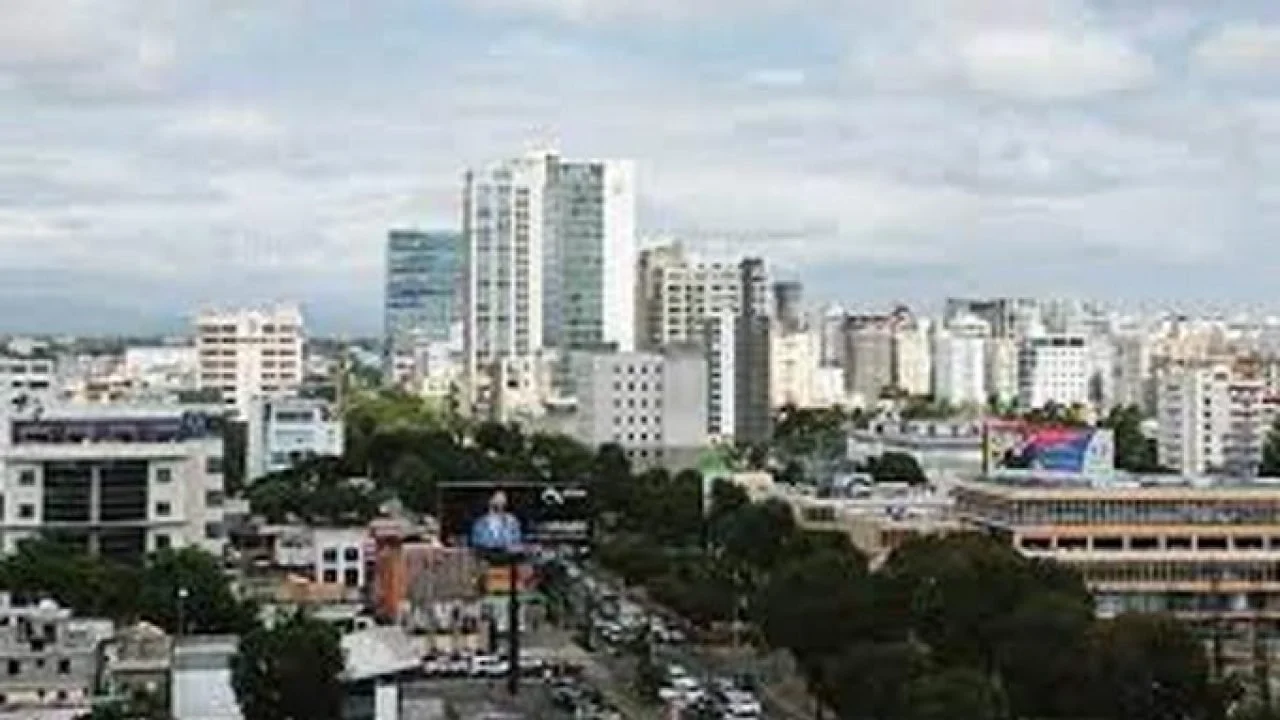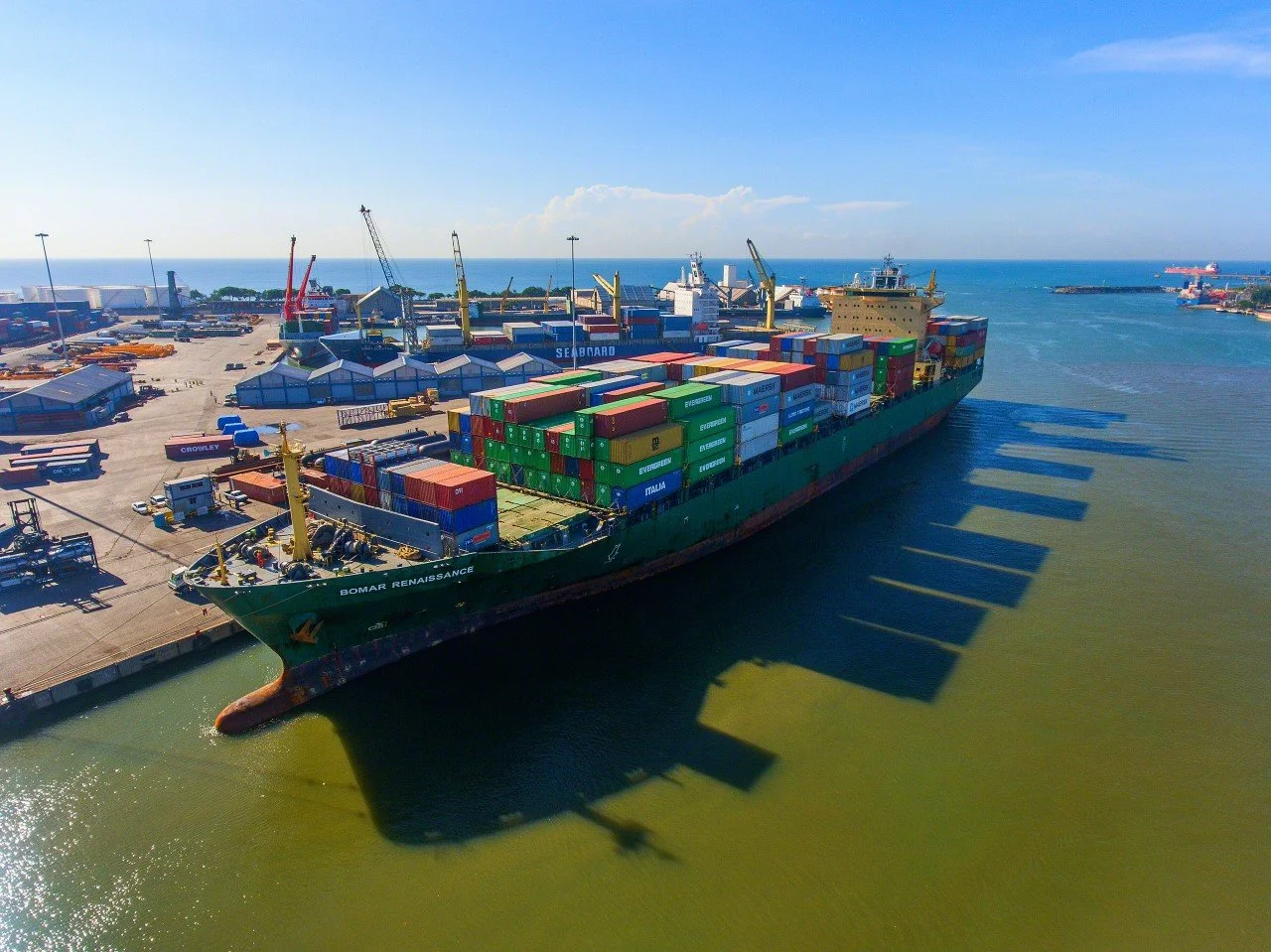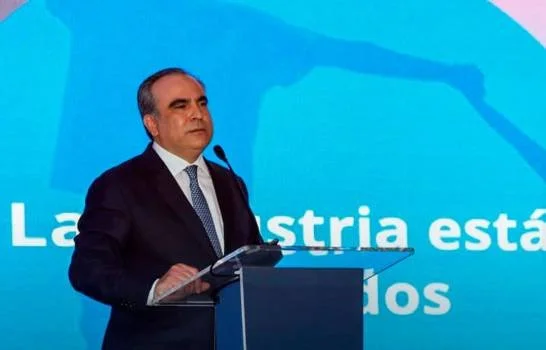Dominican president steers economic recovery, boosts investor confidence, fights corruption.
BY JOACHIM BAMRUD
Despite the continued COVID pandemic, the Dominican Republic is booming.
The economy is expected to grow by 11 percent this year, according to estimates by the Central Bank. That would be the best performance in nearly 30 years – since 1992, according to a Latinvex analysis of data from the International Monetary Fund. It would also be the second-highest growth in Latin America after Panama’s projected growth of 11.9 percent.
Next year, the IMF forecasts that the Dominican Republic’s GDP will expand by 5.5 percent, which will be the highest in the region. Fitch Ratings predicts it will grow even higher – by 5.7 percent.
Much of the credit goes to policies implemented by President Luis Abinader, who assumed office in August 2020.
“President Abinader has been very successful in its handling the country’s economy, under very challenging circumstances created by the COVID-19 pandemic,” says Alejandro Peña-Prieto, the Santo Domingo-based head of the Latin America Practice at Squire Patton Boggs and a former president of the American Chamber of Commerce in the Dominican Republic. Record remittances of US dollars by the Dominican community in the U.S., a significant increase in foreign direct investment (FDI), and the robust performance of certain sectors of the Dominican economy, such as the construction, financial, export free zone and tourism sectors, have been among the main drivers of this success.”
And Fitch Ratings recently upgraded its outlook on the Dominican Republic’s Long Term Foreign Currency Rating from negative to stable, Peña-Prieto points out. Fitch upgraded in part due to investment-driven economic momentum, reflected in the faster-than-expected economic recovery in 2021.
“President Abinader has been successful in managing the economy, as despite the effects of the pandemic, his administration has been able to maintain a stable exchange rate and inflation under control,” says Mary Fernández, a founding partner at Dominican law firm Headrick Rizik Alvarez & Fernández. “The governmental policies have been instrumental in the recuperation of a significant portion of the employees lost during the past year. The Dominican Republic is also one of the fastest growing economies in the world. The increase of the GDP is expected to be in the two digits for 2021. A special mention must be made of his excellent treatment of the COVID19 and the vaccination plan which has allowed tourism to flourish again. It is expected that by the end of the year more tourists will have arrived this year compared to 2019.”
During the first 11 months this year, the Dominican Republic received 4.2 million tourists. Meanwhile, September, October and November all saw record high tourism arrivals, Tourism Minister David Collado announced.
The sector has seen a $550 million in investments this year, according to the Dominican Hotel Association.
“The Dominican economy does not recover without recovering tourism,” Abinader told a group of hotel managers in Punta Cana.
Both Collado and Abinader have received high praise from the tourism industry for their proactive work to improve the sector.
The Dominican Republic is the second-largest recipient of international tourists in Latin America after Mexico and the third-largest recipient of tourism receipts in the region, according to a Latinvex analysis of 2019 data from the World Tourism Organization (WTO).
FOREIGN INVESTMENT
Foreign direct investment is expected to reach $3 billion this year and increase by 25 percent next year, Abinader predicts. This year’s FDI level would represent a 17.5 percent increase over the $2.6 billion foreign direct investments received last year.
“This success in attracting foreign investment can largely be attributed to the successful implementation by the Abinader administration of a business-friendly foreign relations and trade agenda, which has highlighted the attractiveness of the Dominican Republic as a “nearshore” alternative to Asia for U.S. manufacturers looking to redesign their logistics and supply chains,” Peña-Prieto says. “As part of this strategy, the Abidader Administration, through Foreign Affairs Minister Roberto Alvarez and Industry and Commerce Minister Victor “Ito” Bisonó, has been working to ally with Panama and Costa Rica to cooperate on issues of transparency, human rights and economic development, in order to highlight to potential U.S. and other investors the strength of our countries’ democratic institutions and rule of law.”
Furthermore, the Abinader Administration has been working closely with the Dominican and foreign private sectors to identify and systematically eliminate obstacles to investment and trade, he adds.
“The administration’s success in this area comes mainly in having been able to maintain a stable economy as well as sending a clear message that the rule of law will be respected,” Fernandez says. “These two factors have prompted the initiation of numerous projects, in areas of infrastructure and energy, the results of which will probably be seen in within the next few years. Foreign investment remains very robust and growing in the country.”
CORRUPTION FIGHT
Abinader is receiving high marks for his efforts at reducing corruption. In an unprecedented move, he announced during his August 2020 inauguration that he would make the Attorney General’s office independent. He also named Miriam German, a well-respected former Supreme Court judge, and Yeni Berenice, a well-respected former prosecutor, as attorney general and deputy attorney general.
That led to the attorney general’s office to start aggressively probing and charging corruption in a series of high-profile cases implicating former president Danilo Medina’s brother Alexis, two sisters, a brother-in-law, his chief of presidential security when he was president and his head of security after he left the presidency. The charges run from winning public bids despite a lack of qualification to failure to supply the promised products despite receiving payment. In the case of Medina’s two former bodyguards for Medina they are accused of participating in a scheme to receive all or parts of the salaries of employees they appointed to the public payroll.
“President Abinader’s main achievement in fighting corruption has been the appointment of an independent Attorney General and letting her act in an independent manner, without undue interference from the political side of the Executive Branch,” Fernandez. “This sole action has prompted the prosecution of corruption cases in a magnitude never seen before including a rigorous application of the rule of law in such cases. However, he also must be commended for dismissing high level officials- three Ministers in this first year- for being suspicious of corruption in their respective ministries or governmental positions.”
Abinader has kept his political campaign promise to promote the independence of the General Attorney’s Office, and thus far does not seem to have influenced or interfered with this office in its prosecution of corruption, Peña-Prieto points out.
“The General Attorney’s Office has received significant economic resources that has allowed it to pursue a number of complex and far-reaching criminal investigations, mainly directed against family members, former governmental officials and members of the armed forces of the preceding administration,” he says. “In addition, President Abinader has terminated and/or suspended various members of his own administration who have been involved in public scandals and/or accused of wrongdoings, allowing the corresponding criminal and ethical investigations to proceed.”
Meanwhile, the Comptroller General’s office is planning to implement new policies aimed at boosting audits of state expenditure in an effort to reduce corruption, Diario Libre reports.
“In the Dominican Republic there are no longer untouchables, no one is above the law and anyone who the Attorney General’s Office can prove has committed a crime will be brought before the courts, ” Wilson Camacho, the head of the Office of the Special Prosecutor for the Persecution of Administrative Corruption (Pepca), told reporters last month.
Abinader’s anti-corruption measures have not gone unnoticed by the US, which had criticzed corruption under Medina.
“We are extremely appreciative of the leadership that the Dominican Republic continues to show, for example, in combating corruption, really setting a standard for many countries,” US Secretary of State Anthony Blinken said during a meeting with Dominican Foreign Minister Alvarez.
ELECTRICITY OVERHAUL
Abinader is also planning on reforming the electricity sector which has suffered from frequent blackouts and heavy losses for the state power companies that hold a monopoly on distribution.
Late last month, his government announced that the state electricity companies would be operated by one or several private companies, although the state would continue to be the owner. The move –using Public-Private Partnership model — the would generate $1.6 billion in fresh investments from private companies during six or seven years while eliminate the continued $1 billion cost for the government of covering the state companies’ losses, according to Listin Diario.
Meanwhile, eliminating the holding company for the three state electricity companies has saved $62 million, officials say.
“Once such Public-Private Partnership enter into force, this model could have a positive impact in the reduction of blackouts, as a private company will oversee certain activities which are currently concentrated in the public power distribution companies and thus, this could bring efficiency to the power distribution activity, “ Fernandez says. “However, in order to permanently reduce blackouts, other improvements within the power sector would also need to be accomplished (i.e. improvements on the power transmission system), power loss reduction programs, a more efficient power generation programming, among others.”
Dealing with the longstanding problems of the Dominican electric sector remains one of the challenges facing the Abinader Administration, Peña-Prieto points out.
“Particularly relevant is meeting the growing demand for energy required by our fast-growing economy, as well as reducing the financial deficit of the electricity sector which is currently being born by the government,” he says. “The privatization of the operation of the state-owned distribution companies, which has been proposed by the Abinader Administration, could contribute to making these companies more efficient and thus to reduce the amount of the deficit. The Terms of Reference for the selection of the private operators of the distribution companies have yet to come out, but previous experience shows that the ultimate success will depend on the implementation of the required legal and regulatory framework as well as how much governmental support is provided to these companies in order for them to be able to effectively prosecute non-technical losses.”
With respect to generation, the Abinader administration has put out various tenders for the procurement of new capacity to face rising demand for power, Peña-Prieto adds.
But a key headache remains the $2.4 billion Punta Catalina coal plant built by Medina. The plant, which has suffered from repeated outages and environmental pollution, was formally inaugurated by Medina in July last year after several delays at a cost overrun of 17 percent.
The Medina government had awarded Odebrecht the Punta Catalina contract of more than $2 billion in 2017, ignoring cost-effective bids from Chinese construction companies SEPCO3 (US$1.1 billion) and Gezhouba Group (US$900 million). The U.S. Justice Department revealed in 2016 that, from 2001 to 2014, Odebrecht paid at least $92 million in bribes in the Dominican Republic, which helped Odebrecht win contracts amounting to more than $4.7 billion. (see Dominican Republic: Punta Catalina & Corruption).
A report by the International Consortium of Investigative Journalists (ICIJ) revealed more than $39 million in secret Odebrecht payments made in connection with Punta Catalina. “Two official investigations into the project that reported finding no wrongdoing didn’t mention these payments,” the ICIJ says.
GOVERNMENT WASTE
The Dominican Republic has long been among the world’s worst countries in terms of government waste, with an over-bloated public sector and diplomatic corps with many officials receiving extraordinarily high salaries.
“The [Abinader] administration has developed several strategies to reduce waste; namely, limiting the expense account of public servants in their respective positions, and requiring the payments to public officials to be made by check to force the recipients to go pick the checks personally, to be able to identify their beneficiaries,” Fernandez says.
This measure resulted in more than 5,000 checks not being picked up, which represent more than 80 million pesos (US$1.4 million) of savings in one single month, she points out.
“Special mention should also be made of the appointment of a respected and independent professional to the General Directorate of Public Contracting, which has been working to further increase transparency in government contracting,” Fernandez says.
CHALLENGES
Despite his success on many fronts, the Dominican president faces several challenges ahead. Peña-Prieto points to three.
“First, he is striving to vaccinate the Dominican people against COVID-19, while continuing to navigate the country’s economy through the pandemic,” he says. “So far, these efforts have been largely successful in that over 60 percent of the population has received at least two vaccine doses (mainly Sinovac), and a significant percentage has received a third “booster” shot of another RNA-type vaccine. Second, in light of the current political and social instability and violence in neighboring Haiti, President Abinader faces the challenge of securing the country’s borders and promoting international awareness of the need to take collective action to help Haiti. Third, he will need to try to keep inflationary pressures under control, paying particular attention to “imported” inflation resulting from increases in the prices of oil and cargo transportation, as well as monetary expansion policies in the U.S. and the E.U.
Inflation is expected to reach 7.8 percent this year, the IMF estimates. That’s the highest in a decade, according to a Latinvex analysis of IMF data. It will also be the third-highest in Latin America behind Argentina and Venezuela. Although much of the Dominican inflation has been caused by the strong economic growth and rise in international oil prices, many Dominicans blame Abinader for the rising prices.
The Central Bank in November raised interest rates from 3 percent to 3.5 percent, citing the growing inflationary pressures. That was the bank’s first increase since July 2018. The past few years the bank has either kept the rate or reduced it.
“The Abinader administration’s main challenge will be to maintain a stable economy without increasing the country’s debt load,” Fernandez says.
To accomplish this, Abinader will probably need to undertake a tax reform that will allow the government to increase its receipt of funds, as well as implement a government austerity plan to further reduce unnecessary expenses, she says.
“The remaining 2 years and 8 months of his term will not be easy for President Abinader,” Fernandez points out. “He will need to be able to maintain a stable economy and control the inflation while at the same time developing social projects to benefit those most disadvantaged and to attempt to improve the wealth distribution in the country. Political challenges – such as whether to run for reelection and the timing for any such run – will also be important factors in the coming years.”
Peña-Prieto is upbeat about the outlook for Abinader. “Assuming he maintains the current course and continues successfully to face the challenges …, the outlook for the remainder of his four-year term is very positive,” he says.
For his efforts at managing the economy, boosting investor confidence and fighting corruption, Latinvex names President Luis Abinader Leader of the Year.

